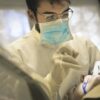DNA stands for deoxyribonucleic acid. DNA is the chemical molecule that contains the genetic information of a living thing. Every living organism has DNA in its cells, and multicellular organisms have a complete set of DNAs required for the organism in each cell. DNA is the hereditary material that passes from one generation to another.
Reasons for Testing
One can do a DNA test for several reasons, which may include
Forensic Analysis
DNA testing in forensics has many practical functions. One can identify a body and catch a criminal through this technology. DNA extraction can come from saliva, hair, blood, bones, teeth, and even cigarette butts. The new enhanced DNA testing technology allows forensics to hunt down criminals with a small clue.
Family Reconnection
When families depart from a war zone or a disturbed country, they lose their loved ones in the way. This separation can be vicious, and the family members may end up in distant lands while finding a safe place.
Court Cases
In many court cases, the judge orders a DNA test. Lawsuits like paternity disputes, Rape cases, or Adultery charges use DNA to prove their case.
Research
DNA testing is helpful in various researches. Through a DNA test, one can tell about the environmental effects on a body. With the help of DNA, researchers found out more about the life of mummified bodies.
Medical Practice
A DNA test is also helpful in a medical setting. A patient may need a tumor removal; before the doctors remove the tumor, they test the DNA to check if the lump is going through any changes or what kind of tumor it is.
For Fun
A recent trend on social media influenced many YouTubers to order a home DNA test kit. These YouTubers conducted a DNA test to find out more about their ancestry, habits, and attributes…
The DNA test cannot tell you everything about your ancestry, as when the egg and sperm create a fetus, they have 23 chromosomes each. These 23 chromosomes do not contain all the genes from your parent’s body, they are only half of the genes from each parent, and they combine to create your complete sequence of 46 chromosomes.
99% of the genetic information of a human’s body is the same as all the other humans. Only 1 percent of your genetic material decides your distinct qualities. Hence, two siblings can have different ancestry.
How is a DNA Test Conducted?
The first step in DNA testing is the extraction of the DNA matter. DNA matter is present in all parts of the human body. In the case of an embryo, the matter outside the amniotic fluid is the sample.
Sampling
Once the sample is collected, it reaches the laboratory. The first step in the lab is to do quantitation. Quantitation is a process where the lab inspector checks if the DNA belongs to a human or bacteria. It is approximately a three hours-long process.
Molecular Xeroxing
The molecular xeroxing process is also known as Amplification. Through a Polymerase Chain Reaction, it is possible to make multiple copies of a DNA sequence. This step is necessary for DNA testing because, many times, the DNA matter that a lab inspector gets is limited. This step allows the technician to make the sample sufficient for all the tests.
Capillary Zone Electrophoresis
The Amplified DNA molecules then enter a very thin capillary filled with gel and get separated; this process is called Capillary Electrophoresis. The DNA is a negatively charged matter, and the capillary contains a positively charged anode on the other end.
The DNA particles get separated concerning their size. This separation helps the lab technician to note the different genes and generate a report. Then the DNA results are sent to the physician, court, or the patient.
![]()









